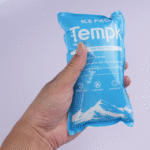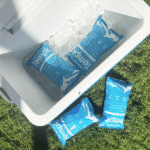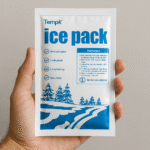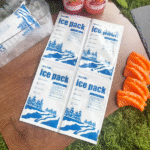Pharma Cold Chain Tracking in 2025: Seguridad, Compliance and Innovations
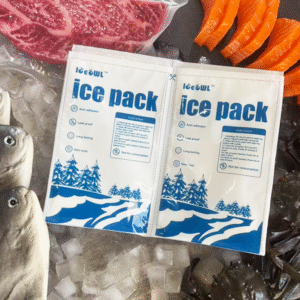
Every step that a vaccine, biologic or gene therapy takes from the factory to the patient must stay within strict temperature bands. If it doesn’t, the drug may lose potency or even become unsafe. Pharma cold chain tracking gives you visibility into these journeys and allows you to intervene before an excursion turns into waste. En 2025, more than two fifths of newly approved drugs require temperature control, and up to half of vaccines are still lost due to poor handling. This article explains how modern tracking solutions protect product quality, help you meet new regulations and reduce environmental impact.
Why does pharma cold chain tracking matter for patient safety and your bottom line? Discover how temperature excursions damage sensitive therapies and why 43 % of new drugs need cold storage.
What are the recommended temperature ranges and how should you evaluate excursions? Learn the definitions of refrigerators, congeladores, cold storage and mean kinetic temperature (MKT) guidelines for 2025.
Which regulations govern cold chain tracking in 2025? Understand Good Distribution Practice (PIB), USP <1079.2> and DSCSA deadlines for electronic traceability.
What technologies enable real time monitoring and predictive analytics? See how IoT sensors, AI, cadena de bloques, drones and sustainable packaging minimise spoilage.
How can you build a reliable, sustainable cold chain system? Get best practice tips on packaging, transporte, documentación y planificación de contingencias.
Why Pharma Cold Chain Tracking Matters
Protecting efficacy and public health. Medicines with complex biological structures—such as vaccines, péptidos, monoclonal antibodies and gene therapies—are highly temperature sensitive. According to the American Society of Health System Pharmacists, encima 43 % de 292 drugs approved between January 2018 and March 2023 require cold storage, y 6 % need freezing or ultra cold conditions. Many vaccines become ineffective if they are exposed below freezing or above 8 °C, while gene and cell therapies can degrade when temperatures rise above –70 °C. The World Health Organization estimates that up to 50 % of vaccines are wasted each year due to inadequate temperature control and logistics, demonstrating the public health risk of an unreliable cold chain.
Financial impact of excursions. Poor temperature control leads to financial losses, regulatory penalties and reputational damage. Temperature controlled logistics accounted for nearly 18 % of biopharma logistics spending in 2020, and the market for cell and gene therapies—which often require ultra cold storage—is projected to surpass US $81 mil millones por 2029. When a product falls outside its specified range, it may need to be discarded or re qualified, causing revenue loss and delaying patient care. The Drug Supply Chain Security Act (DSCSA) warns that data mismatches between electronic records and physical products can halt shipments and trigger costly quarantines; industry estimates suggest DSCSA related errors could cost more than US $6 billion each year. Strong tracking systems prevent these losses by identifying excursions in real time and enabling timely interventions.
Reputation and regulatory compliance. A single failure in the cold chain can damage a brand’s reputation and invite regulatory scrutiny. Patients expect safe, effective medicines, and regulators impose steep fines for non compliance. Real time tracking helps you meet the expectations of the FDA, EMA and WHO while demonstrating care for patient safety. In an era where digital health data is transparent, reliable cold chain performance is a competitive advantage.
The Cost of Temperature Excursions
Temperature excursions not only degrade drug potency but also cascade into operational and financial challenges. When shipments are quarantined due to mismatched serial numbers or missing temperature logs, companies must investigate root causes, perform stability testing and file corrective action reports. These delays can stall product releases by days or weeks, impairing supply continuity. A robust pharma cold chain tracking program reduces these risks by offering continuous visibility and automated alerts.
| Consecuencia | Descripción | Lo que significa para ti |
| Degradación del producto | Exposure above 8 °C or below freezing can make vaccines and biologics ineffective. | Loss of product potency and potential recalls require costly replacement and can harm patients. |
| Sanciones regulatorias | DSCSA requires accurate electronic data matching each physical product; non compliance may lead to fines up to US $500,000. | Multas, shipment delays and licence suspension jeopardise your business operations. |
| Supply disruption | Excursions trigger investigations and re qualification, delaying deliveries to pharmacies and clinics. | Patients may face shortages, and your organisation’s reputation can suffer. |
| Waste and environmental impact | Wasted vaccines contribute to unnecessary manufacturing and transport, increasing carbon emissions. | Wasted resources and higher costs conflict with sustainability goals. |
Consejos y consejos prácticos
Short haul urban deliveries: Use IoT enabled pallet shippers with gel packs so sensors send alerts if temperatures drift.
Remote or rural shipments: Combine portable cryogenic freezers with solar powered storage to overcome power instability.
Biológicos de alto valor.: Employ reusable vacuum insulation panel (personaje) containers and cryogenic shippers such as Crēdo Cube™ to maintain ultra cold conditions for over 144 hours while reducing dry ice use by 75 %.
Caso del mundo real: A biotech firm shipping a gene therapy from California to rural Africa used a portable cryogenic freezer with IoT sensors. The device maintained –100 °C for 48 hours and transmitted real time temperature updates via satellite. When a sensor detected a rising temperature due to a stuck compressor, the operations team rerouted the package through a nearby hub with backup freezers, ensuring that the therapy arrived intact. This example illustrates how proactive monitoring and contingency planning preserve patient safety and corporate revenue.
Understanding Temperature Requirements and Storage Definitions
Definitions matter. Los EE. UU.. Pharmacopeia defines temperature categories that underpin cold chain management: a refrigerator maintains 2 °C a 8 °C, a freezer maintains –25 °C to –10 °C, “cold” means not exceeding 8 °C, “cool” refers to 8 °C a 15 °C, and controlled room temperature (CRT) ranges from 20 °C a 25 °C. The Centers for Disease Control and Prevention specify that ultra cold freezers for certain vaccines must maintain –90 °C to –60 °C and that standard freezers should remain between –50 °C and –15 °C. Understanding these ranges is the foundation for safe transport and storage.
Evaluating excursions with Mean Kinetic Temperature. USP <1079.2>, released in August 2025, provides guidance on using mean kinetic temperature (MKT) to assess excursions. For CRT products, the permissible range is 15 °C-30 °C, with excursions up to 40 °C for less than 24 horas; the 30 day MKT must not exceed 25 °C. For controlled cold temperature products (2 °C-8 °C), temporary excursions to 15 °C are allowed for up to 24 horas, provided the 24 hour MKT stays below 8 °C. Each excursion becomes a non conforming event requiring investigation and documentation.
Typical Temperature Ranges for Common Products
| Tipo de producto | Recommended Range | Impacto de las desviaciones | Implicaciones prácticas |
| Vacunas estándar (p.ej., influenza) | +2 °C a +8 °C | Freezing causes irreversible reactions; overheating reduces potency. | Maintain constant refrigeration, avoid freezing and monitor continuously. |
| Vacunas contra el VPH | +2 °C a +8 °C | Pérdida permanente de potencia si se congela.. | Utilice termómetros y alarmas calibrados para evitar excursiones.. |
| Pfizer COVID 19 vaccine | –80 °C a –60 °C | Temperatures above this range reduce efficacy. | Invierta en almacenamiento criogénico portátil y soluciones de envío validadas. |
| Moderna COVID 19 vaccine | –25 °C to –15 °C for long term storage; 2 °C–8 °C hasta 30 días | Extended room temperature exposure shortens shelf life. | Planifique cuidadosamente las duraciones de envío y los tiempos de almacenamiento local. |
| Gene & terapias celulares | –70 °C o menos | La degradación conduce a la pérdida de valor terapéutico.. | Use specialised cryogenic freezers and real time monitoring. |
What These Ranges Mean for You
Understanding the appropriate temperature range for each product allows you to choose the right packaging, monitoring equipment and logistics partners. Failing to maintain the required range not only compromises efficacy but also invites regulatory scrutiny and financial loss.
Regulatory Framework and Compliance: PIB, USP <1079.2> and DSCSA
Buena práctica de distribución (PIB). GDP guidelines enforced by the FDA, EMA and WHO require temperature control (típicamente 2 °C-8 °C), equipo calificado, monitoreo continuo, risk assessment, formación y documentación. Companies must implement validated packaging, calibrate monitoring devices to recognised standards and develop contingency plans for power outages or equipment failures.
DSCSA deadlines. Los EE. UU.. Drug Supply Chain Security Act mandates an interoperable system for tracking prescription drugs at the package level. Signed in 2013, it phases in requirements culminating in full implementation by August 27 2025 for wholesale distributors, with large dispensers following by November 27 2025 and small dispensers by November 27 2026. Key obligations include secure electronic exchange of transaction data, verification of product identifiers (GTIN, número de serie, número de lote, expiration date) and strict data accuracy. Non compliance can lead to fines up to US $500,000 and shipment delays.
Global alignment. Fuera de EE.UU., the EU’s GDP and GMP Annex 11 emphasise validated electronic systems with audit trails and secure access. Many countries follow WHO vaccine storage guidelines, which recommend digital monitoring and documentation. Pfizer’s COVID 19 vaccine must be stored between –80 °C and –60 °C, while Moderna’s vaccine requires –25 °C to –15 °C long term. Adhering to these standards ensures that international shipments maintain integrity across borders.
DSCSA Timeline and Responsibilities
| Stakeholder | Compliance Deadline | Key Duties | Por que importa |
| Fabricantes | Puede 27 2025 | Serialize each package, record transaction data and ensure that electronic records match the physical product. | Early compliance sets the tone for downstream partners and avoids shipment quarantines. |
| Wholesale distributors | Agosto 27 2025 | Exchange EPCIS transaction data, verify product identifiers, maintain traceability. | Failure to comply can result in fines up to US $500,000 and loss of licence. |
| Dispensadores grandes | Noviembre 27 2025 | Authenticate serial numbers, share transaction statements with trading partners. | Ensures patients receive genuine, safe medicines. |
| Small dispensers | Noviembre 27 2026 | Same as large dispensers, with additional time for implementation. | Allows smaller pharmacies to adopt digital systems without disruption. |
Practical Compliance Tips
Implement an interoperable data platform that integrates serialisation, transaction data and real time temperature monitoring.
Train staff on DSCSA requirements and assign accountability for data accuracy.
Calibrate and qualify sensors and packaging to recognised standards such as NIST or UKAS.
Conduct mock audits to identify gaps in documentation and electronic traceability.
Technologies Enabling Real Time Cold Chain Tracking
IoT y seguimiento en tiempo real
IoT sensors are the bedrock of modern cold chain management. They continuously collect temperature, humidity and location data and transmit it to cloud platforms. These sensors enable route optimisation, reduce waste by preventing spoilage and help companies meet regulatory requirements. When a sensor detects unsafe temperatures, it sends alerts via text messages or mobile apps so staff can intervene before product quality is compromised. Predictive analytics built into IoT platforms analyse historical and live data, forecasting equipment failures and reducing unplanned downtime by up to 50 % while lowering repair costs by 10–20 %.
Inteligencia artificial y análisis predictivo
AI enhances logistics by optimising routes, forecasting demand and predicting equipment failures. AI powered route optimisation uses real time traffic and weather data to select the fastest path, reducing transit time and risk of spoilage. Predictive maintenance models identify upcoming issues, and AI based demand forecasting helps manufacturers plan production and shipping volumes. By comparing temperature data with regulatory ranges, AI can automatically flag non compliant shipments. These capabilities improve reliability and free personnel to focus on high value tasks.
Blockchain para la trazabilidad
Blockchain technology ensures end to end traceability and tamper proof data sharing. Each shipment’s temperature, humidity and transit time are recorded in an immutable ledger accessible to manufacturers, carriers and health providers. Blockchain prevents data manipulation and counters counterfeit drugs. En el sudeste asiático, blockchain adoption provides real time monitoring and transparency for vaccine shipments. Integrating blockchain with IoT sensors allows stakeholders to verify that a product stayed within its required temperature range, simplifying audits and strengthening trust.
Drones y entregas remotas
Delivering medicines to remote or disaster affected regions is challenging. Drone technology offers rapid, contactless delivery, ensuring that temperature sensitive products reach patients quickly and safely. Drones with built in refrigeration and IoT trackers maintain temperature integrity throughout flight. As regulatory frameworks evolve, drones are becoming an increasingly viable solution for rural healthcare and emergency response.
Portable Cryogenic Freezers and Ultra Cold Solutions
Advanced cell and gene therapies often require temperatures below –80 °C. Portable cryogenic freezers maintain –80 °C to –150 °C even in challenging environments. Their compact design allows on the go transportation during clinical trials or fieldwork. These freezers offer real time temperature tracking and alarm notifications, ensuring compliance and protecting product potency. Such innovations allow therapies to reach remote areas without relying on large infrastructure.
Sustainable Energy and Eco Friendly Packaging
Refrigeration accounts for about 2 % de las emisiones globales de CO₂, making sustainability a critical concern in cold chain logistics. Companies are adopting solar powered cold storage units and biodegradable packaging to cut emissions and meet net zero goals. Solar units provide cost effective storage in regions with unreliable power grids. Contenedores reutilizables, paneles de aislamiento al vacío (VIP) y materiales de cambio de fase (PCM) offer superior thermal stability and lower waste. Reusable pallet shippers like Peli BioThermal’s Crēdo Cube™ maintain ultra cold temperatures for over 144 hours while reducing dry ice use by 75 %.
Automatización, Robotics and Smart Warehouses
Labour shortages and rising demand push warehouses to automate. En 2025, solo sobre 20 % of cold storage facilities are fully automated. Robotics and automated picking systems improve throughput, reduce errors and protect workers from extreme temperatures. Vehículos guiados automatizados (AGV) and robotic arms move goods between freezers and staging areas, enabling 24/7 operaciones. Coupled with AI driven scheduling, automation supports just in time delivery and reduces congestion.
Integration of Sustainable Supply Chains
Governments, investors and health organisations are pressuring pharmaceutical companies to decarbonise logistics. Cold chain and logistics segments dominate net zero efforts because sustainable logistics reduce spoilage and carbon emissions. Europe leads the market due to stringent regulations, while Asia–Pacific is the fastest growing region thanks to large scale investment in green manufacturing and renewable energy. To achieve net zero, companies deploy carbon tracking software, optimise transportation routes and integrate renewable energy sources into facilities.
Summary of Technologies
| Tecnología | Role in Cold Chain | Specific Benefit |
| sensores de iot | Continuous monitoring of temperature, humedad y ubicación. | Real time alerts prevent excursions; predictive analytics reduces downtime. |
| Inteligencia artificial | Optimización de ruta, demand forecasting and predictive maintenance. | Reduce el tiempo de tránsito, anticipates equipment failures and flags non compliant shipments. |
| cadena de bloques | Immutable ledger of temperature and location data. | Prevents counterfeiting, simplifies audits and enhances trust among stakeholders. |
| Drones | Rapid delivery to remote areas with built in refrigeration. | Ensures access to therapies in disaster zones or hard to reach regions. |
| Cryogenic freezers | Maintain ultra low temperatures between –80 °C and –150 °C. | Protects sensitive gene and cell therapies during transport. |
| Embalaje sostenible | Almacenamiento con energía solar, reusable containers and PCMs. | Reduces carbon footprint and waste while maintaining temperature stability. |
| Automatización & robótica | AGV, robotic picking and smart warehouses. | Improves efficiency, reduces labour costs and supports just in time delivery. |
Building a Reliable Cold Chain System
Implementing a robust cold chain requires a layered approach combining physical equipment, digital monitoring, documentation and trained personnel.
Temperature control and stability. Use reliable refrigeration units and passive packaging—insulated containers, transportistas de paletas, phase change materials—to maintain stable conditions from manufacturing to administration. Ultra cold products may need cryogenic freezers and dry ice; ensure packaging is validated for the required duration.
Monitoreo continuo. Implementar sensores, registradores de datos y dispositivos IoT que registran la temperatura y la humedad continuamente. Real time monitoring allows quick corrective actions. Predictive analytics can lower repair costs and reduce unplanned downtime by up to 50 %.
Documentación rastreable. Mantener registros digitales de datos de temperatura., Procedimientos de manejo y acciones correctivas.. DSCSA requires secure electronic data exchange and serialised product identifiers. Digital logs make it easier to demonstrate compliance during audits.
Validated equipment and processes. Ensure monitoring devices and packaging solutions are calibrated to recognised standards like NIST or UKAS. Los socios de embalaje deben proporcionar datos de calificación y cumplir con los requisitos del PIB y de la IATA..
Personal capacitado. Ongoing training ensures personnel understand temperature requirements, handling protocols and emergency responses. Training builds a culture of accountability and reduces human error.
Planificación de contingencias. Develop protocols for equipment failures, power outages and delays. Build redundancy with backup generators, extra sensors and alternate transport routes. Regularly test contingency plans so your team knows exactly what to do when an incident occurs.
Prácticas sustentables. Choose reusable packaging and energy efficient refrigeration systems to reduce your carbon footprint and comply with net zero commitments.
Best Practices for Packaging and Transport
Selecting the right packaging is crucial for maintaining temperatures. Los contenedores isotérmicos representan aproximadamente 40 % of the cold chain packaging market, while pallet shippers represent about 25 %. Materiales de cambio de fase (PCM) y paneles de aislamiento de vacío (VIP) provide precise temperature control, and smart packaging platforms use AI and IoT to recommend appropriate solutions. Cryovac vacuum sealed packaging reduces plastic use and extends shelf life. Al elegir un proveedor, verify that their solutions meet ISTA 7D or GDP standards and that they offer reusable options to lower cost and waste.
For transport, passive cooling solutions like dry ice, liquid nitrogen and gel packs provide reliable temperature control and can be replenished during transit. Real time trackers and tamper evident seals maintain security. Route planning should account for expected temperature exposure, ensuring that shipments arrive within hold times. For last mile deliveries, consider drones or local refrigerated vehicles equipped with IoT sensors.
| Tipo de embalaje | Key Feature | Beneficiarte para ti |
| Contenedores aislados | Represent ~40 % of market. | Provide versatile protection for 2 °C–8 °C shipments; often reusable. |
| Transportistas de paletas | Represent ~25 % of market. | Ideal for bulk shipments; often incorporate dry ice or gel packs. |
| Materiales de cambio de fase & VIP | Offer precise temperature control. | Reduce reliance on dry ice and maintain stable conditions for longer. |
| Embalaje inteligente | Uses AI & IoT to recommend solutions. | Helps you choose the right configuration based on product and route. |
| Cryovac vacuum sealed packaging | Reduces plastic and extends shelf life. | Supports sustainability goals without compromising protection. |
| hielo seco & paquetes de gel | Reliable passive cooling. | Simple, cost effective solution for short and long journeys. |
Practical Advice for Specific Scenarios
Short haul urban routes: Use insulated containers with gel packs and IoT trackers. Plan routes to minimise transit time and avoid high traffic areas.
Cross border shipments: Align with both DSCSA and EU GDP requirements and ensure data formats are compatible. Work with carriers experienced in international cold chain logistics.
Ensayos clínicos: For extremely sensitive therapies, combine cryogenic freezers with portable generators and redundancy sensors. Ensure you have alternative destinations in case of flight delays.
Caso de uso: When a manufacturer needed to ship an mRNA vaccine from North America to Asia, they selected a phase change material shipper with smart sensors. The AI platform analysed weather data and suggested a flight with minimal layovers. Durante el tránsito, a sensor detected rising temperature due to a customs delay. The logistics team activated contingency plans, adding gel packs at an intermediate hub. The vaccine arrived within specification, demonstrating how data driven planning mitigates risk.
2025 Market Insights and Emerging Trends
Descripción general de la tendencia. The pharmaceutical cold chain market is expanding rapidly. Según la investigación, the global cold chain packaging sector is expected to grow from US $20.05 mil millones en 2025 to US $69.55 billion by 2034—a compound annual growth rate (Tocón) de 14.82 %. The broader cold chain monitoring market could surge from US $45.19 mil millones en 2025 to US $266.66 mil millones por 2034. Growth drivers include increased production of biologics, vaccines and cell and gene therapies; expansion of e commerce pharmacies; regulaciones más estrictas; and innovations in packaging and monitoring.
Últimos avances de un vistazo
Automatización y robótica.: Menos que 20 % of cold warehouses are currently automated, leaving substantial room for robots and automated guided vehicles to improve throughput and worker safety.
End to end visibility: AI, IoT and blockchain deliver real time tracking and predictive alerts, reducir el deterioro y mejorar el cumplimiento.
Sostenibilidad: Governments and investors demand carbon neutral logistics; companies adopt renewable energy, biodegradable packaging and reusable containers.
Advanced therapies: Cell and gene therapies require ultra cold conditions; portable cryogenic freezers and reusable shippers support this need.
Supply chain resilience: Climate change increases disease outbreaks and supply disruptions; robust logistics networks and contingency plans mitigate risks.
Digital compliance: DSCSA implementation drives electronic data exchange and serialisation, forcing companies to upgrade their IT infrastructure.
Innovaciones en envases sostenibles: Reusable pallets, eco friendly phase change materials and vacuum insulation panels reduce waste and support ESG goals.
Market and regional insights. Europe dominates the net zero pharmaceutical supply chain market due to stringent regulations, while Asia–Pacific is the fastest growing region thanks to investments in green manufacturing and renewable energy. North America currently holds around 35 % of the cold chain monitoring market. New tariffs on imported packaging materials and refrigeration equipment in the U.S. are reshaping procurement strategies. Companies are mitigating costs by sourcing locally and adopting modular containers.
Preguntas frecuentes (Preguntas frecuentes)
What is pharma cold chain tracking and why is it important?
Pharma cold chain tracking is the process of monitoring and documenting temperature and location data for sensitive medicines from manufacturing through distribution. Garantiza que las vacunas, biologics and gene therapies stay within their specified temperature ranges, preserving their efficacy and safety. Without reliable tracking, up to half of vaccines can be wasted.
How do IoT sensors improve cold chain management?
Los sensores de IoT registran continuamente la temperatura, humedad y ubicación, transmitting data to cloud platforms. Real time alerts enable immediate corrective action, preventing spoilage and reducing product loss. Predictive analytics built into IoT platforms can lower equipment downtime by up to 50 % and repair costs by 10–20 %.
What are the DSCSA compliance deadlines for 2025?
Manufacturers must serialize packages and exchange transaction data by May 27 2025; wholesale distributors must comply by August 27 2025; large dispensers by November 27 2025; and small dispensers by November 27 2026. Non compliance can lead to fines and shipment delays, so early adoption of interoperable data systems is essential.
Which packaging solutions should I choose for ultra cold products?
For therapies requiring temperatures below –80 °C, select portable cryogenic freezers or reusable ultra cold shippers that maintain temperatures down to –150 °C. Combine them with IoT sensors to ensure real time monitoring. Phase change material shippers and vacuum insulation panels can also provide precise control.
¿Cómo puedo hacer que mi cadena de frío sea más sostenible??
Adopt reusable packaging, solar powered storage and renewable energy sources. Use vacuum insulation panels and phase change materials to minimise dry ice consumption, and implement carbon tracking software to measure emissions and optimise routes.
Resumen y recomendaciones
Control de llave:
A robust pharma cold chain tracking system is essential for safeguarding drug potency, patient safety and brand reputation. Encima 43 % of new drugs require cold storage, y hasta 50 % of vaccines are wasted due to poor temperature control.
Understand and follow precise temperature ranges for each product, using MKT guidelines to evaluate excursions.
Comply with GDP, USP <1079.2> and DSCSA regulations, ensuring electronic traceability by August 27 2025 for wholesalers and November 27 2025 for large dispensers.
Leverage IoT, AI, cadena de bloques, drones and sustainable packaging to achieve real time monitoring, predictive analytics and end to end visibility.
Build a comprehensive system that combines validated equipment, monitoreo continuo, traceable documentation, trained staff and contingency planning.
Pasos procesables:
Audite su cadena de frío actual. Identify gaps in temperature control, data capture and regulatory compliance.
Invest in IoT and AI. Deploy sensors and predictive analytics to monitor shipments in real time and anticipate failures
Update your compliance systems. Ensure your enterprise systems can exchange EPCIS data and verify product identifiers before the DSCSA deadlines.
Choose sustainable packaging. Opt for reusable containers, renewable energy solutions and eco friendly materials to reduce emissions.
Train your staff and test contingency plans. Continuous training and simulated crisis drills prepare your team to act quickly when something goes wrong.
Acerca de Tempk
Our expertise. Tempk specialises in designing and manufacturing innovative cold chain packaging solutions for the pharmaceutical, biotech and healthcare industries. Our product line includes insulated boxes, bolsas de hielo, thermal pallet covers and portable cryogenic freezers. Each solution is tested to meet stringent GDP and ISTA 7D standards. We focus on using recyclable materials and energy efficient designs to help you meet sustainability goals while safeguarding your cargo. With a dedicated research and development team and a history of global compliance, we provide reliable equipment and guidance to keep your supply chain compliant and efficient.
Llamado a la acción. Ready to strengthen your pharmaceutical cold chain? Contact Tempk’s experts to discuss customised packaging, real time monitoring integration and sustainability strategies. Let us help you build a resilient, compliant and eco friendly cold chain system tailored to your products.




















